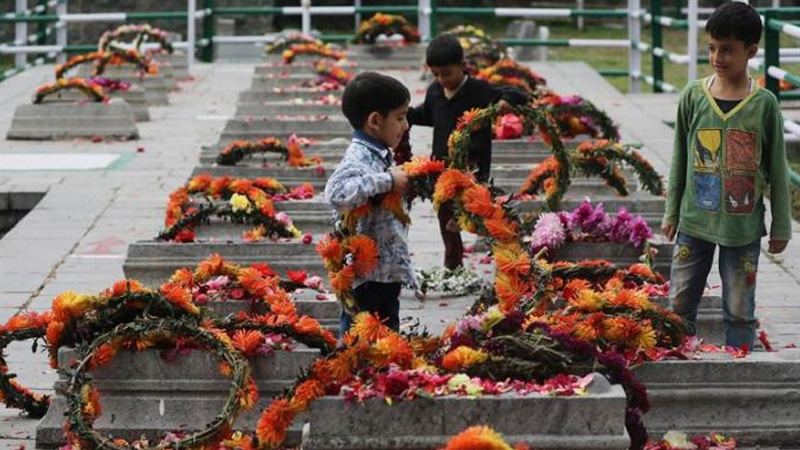
Martyrs’ day of Jammu and Kashmir, also known as Youm-e-Shuhada-e-Kashmir, is celebrated on 13th July, every year, in the memory of 22 civilians who sacrificed their lives in order to release Kashmir from the reign of the cruelty of Dogra Dynasty.
On 13th July 1931 hundreds of people gathered to witness the trial of Abdul Qadeer Khan at the central jail of Kashmir. During the time of the obligatory prayer, the 22 Kashmiris that stood up to deliver Adhan were killed on the spot as they were interrupting the ongoing trial.
The people carried the dead bodies and paraded through the streets of Srinagar, chanting slogans against Dogra brutalities.
But why were the citizens so angry with the ruling Maharaja Hari Singh? What lead to the massive outburst? Below are the two major reasons which lead to the revolt of 1931.
1) Leaves of the Quran were found in a Public latrine
On 20th June 1931 torn pages of the Quran were found in public latrines. Moulvi Muhammad Yousuf Shah at a public meeting held at Hazratbal said: “If we are arrested there is nothing for you to fear. If ten of us are arrested, the other ten must be prepared to take our places”.
2) The Arrest of Abdul Qadeer
Abdul Qadeer, an English army officer, visited Kashmir with his employer who was himself on a casual visit during the summer in order to enjoy the chilly environment of Kashmir. Abdul Qadeer was at Kanqah-i-Maula where he was unable to suppress his feelings which resulted in his impromptu address to the crowd. His speech was recorded by the CID. On 25 June, when he was on his way back to the houseboat he was staying at, Abdul was arrested and charged under section 124-A (treason) and 153 of the Ranbir Panel Code.
Poor economic conditions of Kashmiri Muslims constituting 95% population, religious bias and discrimination faced by Muslims and being treated as third class citizens being the majority taxpayers were the other major reasons which lead to the killing massacre in Kashmir.





